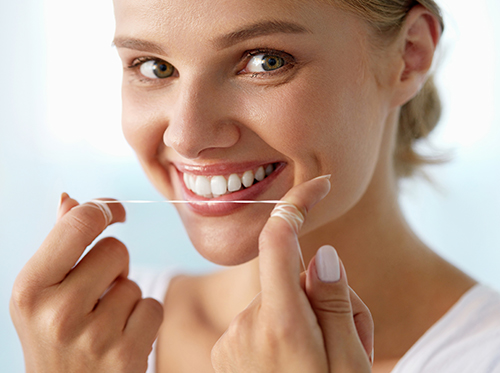Pediatric Dental Emergency Know-How
August 17th, 2023

Parents are usually expert at taking care of their children’s injuries. You know how to disinfect a cut, soothe a bump on the head, and apply a bandage faster than you can blink.
But what happens if your child suffers a dental injury? Teeth can get broken, knocked out, or displaced from a forceful impact, and parents ought to know what to do in those situations, too. Luckily, Drs. Peter Vogel, Vijal Vadecha and our team are here to be a resource for such incidents!
Chipped front teeth are a common injury for young children. First, check to see if the teeth have been broken to the nerve. You can tell this is the case if you see layers and a pinkish center.
Then, wiggle each tooth to make sure it is not loose. If the teeth still feel firmly in place, that’s a good sign. Don’t worry if they are a little loose, because they will tighten again with time.
If your child develops a high temperature or bite sensitivity, treatment is necessary and could include a root canal.
A knocked-out tooth is an injury that requires more attention than just observation. Locate the tooth as soon as you can, and touch only the crown, not the root. Rinse any debris gently with milk or water and place the tooth back in its socket as soon as possible.
According to the American Association of Endodontists, a tooth has a high chance of survival and retention for life if it is returned to the socket within five minutes, and possibly up to 60 minutes, if soaked in milk or saline solution in the meantime.
Say your child is elbowed in the mouth and a tooth gets severely displaced but does not get knocked out. Attempt to shift it back into place by applying light pressure, but be careful not to use too much force. Give your child a cold pack for the swelling and contact our office as soon as possible.
Dental emergencies can be frightening for the child as well as the parent. The best advice we can offer is to stay calm and be assured that we are always here to help! Contact us at our Anthem office as soon as you can, if your child encounters a dental emergency.
When should I floss during the day?
August 17th, 2023

A vital step in your oral health routine is flossing. We hope our patients at Daisy Mountain Dentistry maintain good oral hygiene, including daily flossing between each visit to our Anthem office. A toothbrush is not always enough to get to the hard-to-reach areas of your mouth. When food remains between your teeth, bacteria starts to grow and will break down your enamel. This is where flossing comes in!
Should you floss before or after brushing?
Whatever your personal preference, you may floss before or after you brush your teeth. When you floss first, you can brush away any leftover dislodged food debris from your teeth. On the other hand, when you brush first, you will loosen the plaque between your teeth, which makes flossing more effective.
The essential aspect is that you floss thoroughly by using a fresh strand of floss and make sure to get between every tooth. Even if your teeth look and feel clean, don’t skip flossing or plaque will begin to build up on your teeth.
When is the best time to floss?
Although you should brush your teeth at least twice a day, Drs. Peter Vogel, Vijal Vadecha and our team recommend flossing your teeth thoroughly once a day. Many people prefer to floss before bed, so that plaque doesn’t sit between their teeth all night.
What kind of floss should I use?
You may choose between interdental cleaning picks or flexible floss strands to perform your daily flossing routine. If you have permanent oral appliances or restorations, be sure to follow the flossing instructions provided to you.
Do you need help flossing?
If you’re having trouble flossing or have questions about which floss is best for your teeth, contact our Anthem office and we can provide you with support. Be sure to keep up with your daily flossing routine, and we will see you at your next appointment!
How to get Brighter Teeth for Life
August 10th, 2023

Have you ever wondered why some people have dull and yellow teeth, while others have bright, white smiles? It’s not luck.
Everyone’s teeth naturally dull over time because of aging and the contact our teeth experience with staining foods, such as chocolate and coffee. However, teeth-whitening treatments can give you the whiter smile you’ve been after.
Get Regular Treatments
Unfortunately, the effects of teeth-whitening or bleaching treatments are only temporary, but regular treatments at Daisy Mountain Dentistry can help keep your teeth white for much longer.
The effects of in-office bleaching can last for several months to a year, so you may prefer to repeat your use of at-home bleaching kits every few months to maintain your white teeth. Whitening toothpastes do not contain bleach and are safe to use every day.
Have Realistic Expectations
Not everyone’s teeth can be turned bright white. Some just don’t respond to whitening treatments. If your teeth are a light yellowish color, they may readily respond to teeth-whitening procedures, but bleach will not likely work on grayish teeth. Brownish teeth tend to fall somewhere in between.
Practice Good Oral Hygiene
For the best whitening results, it’s necessary to keep your teeth in good health. Visible fillings, implants, or bridges that are metallic stand out against the white color you’ll want to achieve.
Maintaining good oral hygiene will help you avoid tooth decay and keep your smile bright. In addition to brushing your teeth twice a day, these actions can help promote a healthy mouth:
- Floss every day
- Visit our Anthem office every six months for professional cleanings
- Rinse your mouth with water after each meal and snack
- Limit sugary and starchy foods and beverages that can stain teeth, especially between meals
The Best Snacks for a Healthy Smile
August 10th, 2023

One of the most frequent questions that Drs. Peter Vogel, Vijal Vadecha and our team hear is about what kinds of snacks are best for a child’s dental health. Sugary snacks are inevitable sometimes, but it’s vital for you as a parent to monitor how frequently your child is eating the kinds of snacks that may give him or her a cavity or two down the line.
Unsurprisingly, the best snacks are healthy ones, though they may not always be the most appealing to your little ones. The good news is that healthy doesn’t mean you have to compromise on taste. Once your kids give these tasty snacks a go, they might become open to all things healthy!
- Fresh veggies and hummus
- Apple wedges with peanut butter
- Low-fat yogurt with berries
- Cubes of cheese and crackers
- Hard-boiled eggs with a little bit of salt and pepper
- Celery sticks with cream cheese and sunflower seeds
- A homemade milkshake with low-fat milk (or almond milk), the fruit of their choice, chia seeds, and cinnamon
- Lean proteins such as chicken breast, fish, and turkey
These snacks aren’t high in sugar but they contain all the nutrients your children need to have the necessary energy throughout the day.
This is only a sample of all the great, healthy snacks out there for your kids. For more ideas, ask us the next time you visit our Anthem office. It’s never too early to create healthy habits; they’re not only good for oral health, but overall health too. That’s a win-win, if you ask us.


